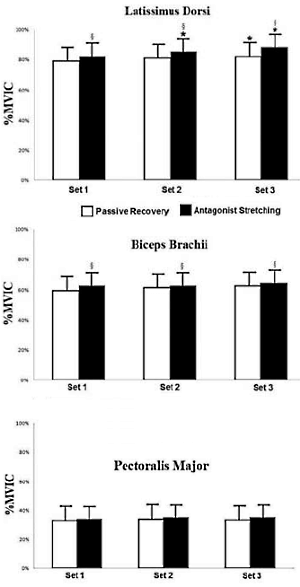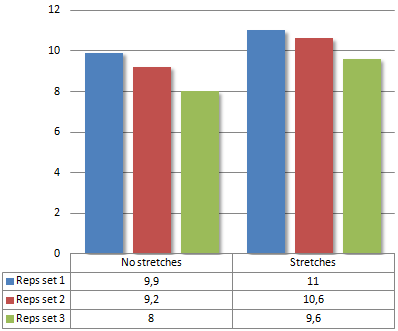"Active negative-- in many exercises. Antagonists are brakes for amateurs; synergists for professionals."
I'm curious to hear any interpretations people may have about this concept.
Agonist and Antagonist Muscles
Here is what occuring...
1) Agonist Muscles
These are the muscle engaged in the movement.
Agonist Bench Press Example
The anterior chain: Anterior Deltoid, Pecs, and Triceps are the Agonist.
2) Antagonist Muscles
These are the counter muscle to that Agonist Muscles.
Antagonist Bench Press Muscles
These the muscle on the opposite side of the Agonist Muscles: Lats, Posterior Deltoid, etc.
Reciprocal Inhibition
Discover how reciprocal inhibition works in the human body, the benefits it offers, and how it can be used in physical therapy. Read now!

brookbushinstitute.com
"Reciprocal inhibition is a neuromuscular reflex that inhibits opposing
muscles during movement.
Car Analogy
1) Agonist Muscles
Think of them like your gas pedal on your car.
2) Agonist Muscles
Think of them like your emergency brake on your car.
When performing an Angonist Movement, part of the body protective responses is to have the brake on via the Antagonist Muscles.
In this situation, it amount to driving with your emergency brake on; the Antagonist Muscles decreasing your Power Output.
How To Take The Brake OFF
Two effective method are...
1) Stretching The Antagonistic Muscles
Example: Hanging from a Pull Up Bar, stretching the Posterior Chain.
As we know, if a muscle is stretched too much prior to an Agonist Exercise, force production decreases; a decrease in Maximum Strength and Power.
However, stretching the Antagonist Muscles is effective in prior to an Agonist Movement. Doing so,, increase force output; Maximum Strength and/or Power.
2) Perform an Antagonist Exercise prior to your Agonist Exercise.
Example: Performing Lat Pulldown or Rows.
Both these method allows the Antagonist Muscle to relax; taking the brake off.
This ensures you will produce more force in the Agonist Movement; the Bench Press in this case.
Lower body training is a little different. It has to do with...
Lombard's Paradox
The Agonist and Antagonist Muscles work together at the same time.
Example
In most Squats, the Quad are the dominate Agonist Muscles.
The Hamstrings are the Antagonist Muscle.
However, both the hamstrings and quadriceps contract at the same time in a Squat.
The same is true with a Traditional Deadlift. The posterior chain is the Agonist Group (Hamstrings) with the anterior chain (Quads) being the Antagonist Muscle group.
Both the hamstrings and quadriceps contract at the same time in a Traditional Deadift.
Summary
1) Upper Body Antagonist Muscle to relax is very straight forward.
Stretching or performing an Antagonist Exercise, prior to an Agonist Muscle Exercise increases force production.
2) Lower Body Agonist/Antagonist Muscles are more complicated.
That because both the Agonist/Antagonist Muscle are contracting at the same time.


